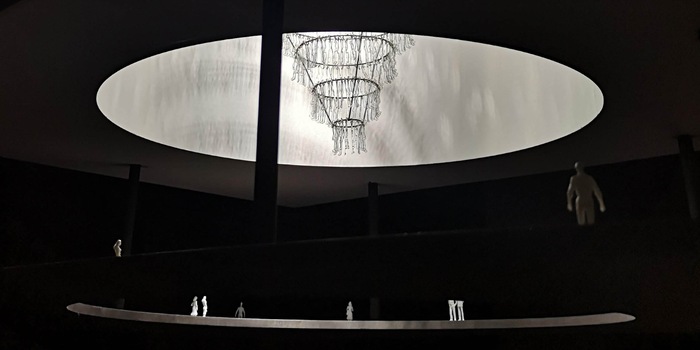
FHNW design students conceptualise "money rooms"
Last week, interior design and scenography students exhibited their final projects. From a shop selling human body parts to an "unreligious" church, the spatial concepts are thought-provoking.
Diploma students from the Institute of Interior Design and Scenography at the FHNW Academy of Art and Design in Basel have spent a semester working on the assignment: "Money rooms, money dreams - how does the cultural value of money manifest itself in spatial design". The results are spatial designs that could not be more different. The rooms could be located in real Swiss locations.
Luxury questions
"Corpora - a store for premium organs" - the spatial concept by graduate Fabiano Casale - revolves around the organ trade and the monetary value of human body parts. The images visualise a showroom at Freie Strasse 105 in Basel, where customers can examine organs and receive advice. The fictitious retail concept runs under the name "Corpora" and shows how a brand that trades in organs could position itself in the luxury segment.
"In principle, a human life is priceless, but there are places where people have an exact price and are perceived as a resource," says Fabiano. During his research on the Darknet, he came across all kinds of body parts, including their prices. Where the organs come from and how voluntarily donors have given them is uncertain, says the graduate.
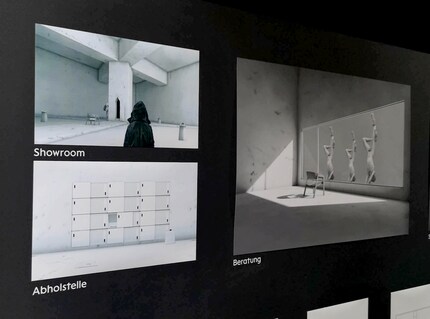
A neutral colour palette, marble elements, simple shapes and little furniture make the shop's rooms sober. This design fits in with the sobering fact that there is a money-hungry society today that does not stop at the commercialisation of organs.
The topic that graduate Nathalie Benz has chosen for her work is similarly depressing. Her design draws attention to the inhumane conditions in which gold is extracted in mines. Gold represents money like hardly any other material. The models show a chandelier hanging in the atrium of the new exhibition centre in Basel. It is made up of miners who are strangled by golden watches. In the dark, their headlamps glow like the candles of a classic chandelier.
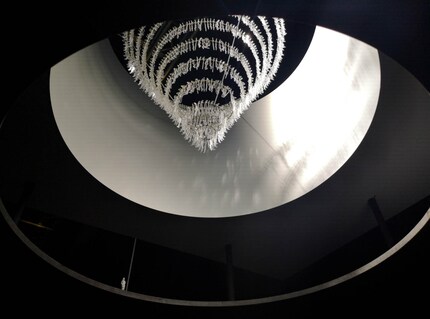
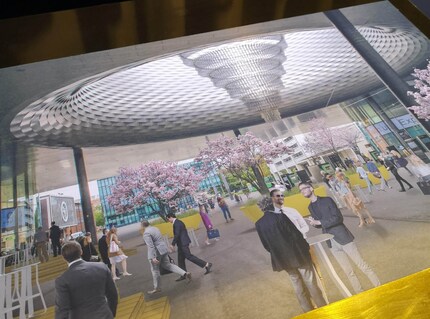
The transparency of the miners symbolises the invisible suffering: "For every three tonnes of gold mined, one person dies. The Observer estimates that one person dies for every three tonnes mined," says Nathalie. As a large proportion of the mined gold flows into the watch and jewellery industry, the young interior designer would install the chandelier at Baselworld 2020.
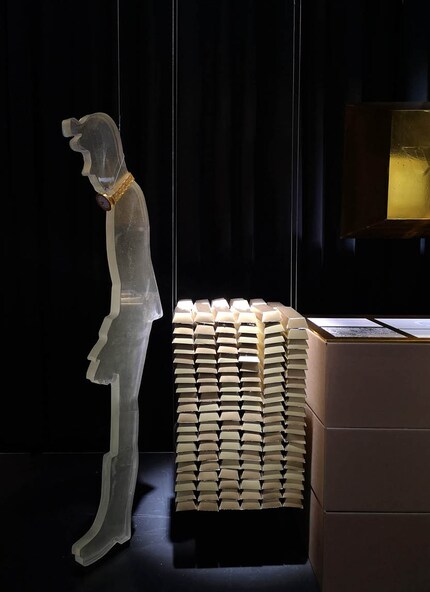
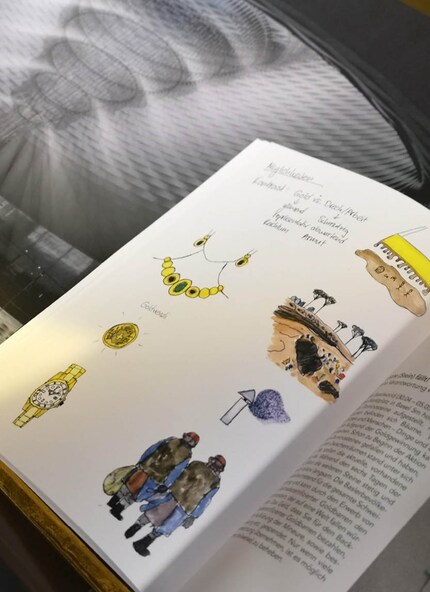
Contemporary places of retreat
Another project called "VALYOO - Stored Stories x the Value of Values" by Mareike Krautzig is about storing things and non-representational objects. The graduate asked people from different age and professional groups what they would store in a room if there were no limits. The answers were used to create representative storage boxes that visitors can view through a small hole.
It quickly becomes clear that personal memories and valuables are stored here instead of money. One of the boxes contains a womb. The interviewee - 26-year-old Raphael - would sometimes like to have it at his disposal so that he can lie in it like an embryo and press the "reset" button. "We constantly lose ourselves in the world that is racing past us (...) and don't always feel right being alone, even though it can give us strength," she says.

Pausing to reflect also plays a role in Figen Senpinar's work: public retreats that are not churches are a rare commodity in Switzerland. According to the "Basler Zeitung", however, every second person there is non-denominational. According to the WHO, one of the biggest stress factors for the Swiss is worrying about money. The "Refugium" concept is intended to be a place where everyone can forget their worries.
Nature plays a key role inside: in addition to trees, water features calm those seeking shelter. The space gives you the feeling of a church where you can be spiritual without being religious.
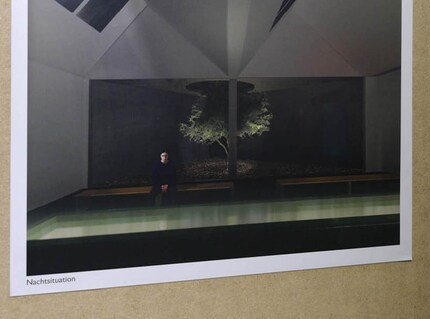
Kim Guttmann also wants to stimulate the senses. Her spatial concept is dedicated to coffee culture. Coffee costs a lot of money these days. If you want a good bean, you pay around six Swiss francs per cup. The "Tank" space concept is located in Basel's Iselin neighbourhood. It's a vending machine that doesn't spit out a coffee for you, but a room to your liking.
Thanks to different sensory categories, visitors can decide what the place for their expensive pleasure should look like. Afterwards, they can enjoy their coffee in the desired atmosphere for twenty minutes.
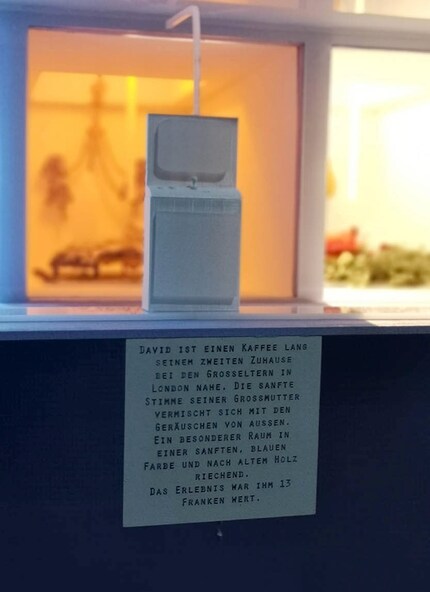
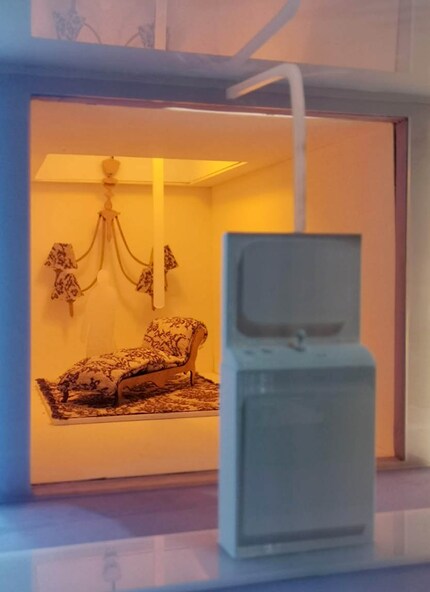
What the last three final projects have in common is that the interior designers equate "money rooms and dreams" with places of retreat. They point to an emerging change in values in our society. Whereas in the 1950s, money rooms were still associated with department stores, today they stand for spaces where you can come to rest. <p
Like a cheerleader, I love celebrating good design and bringing you closer to everything furniture- and interior design- related. I regularly curate simple yet sophisticated interior ideas, report on trends and interview creative minds about their work.